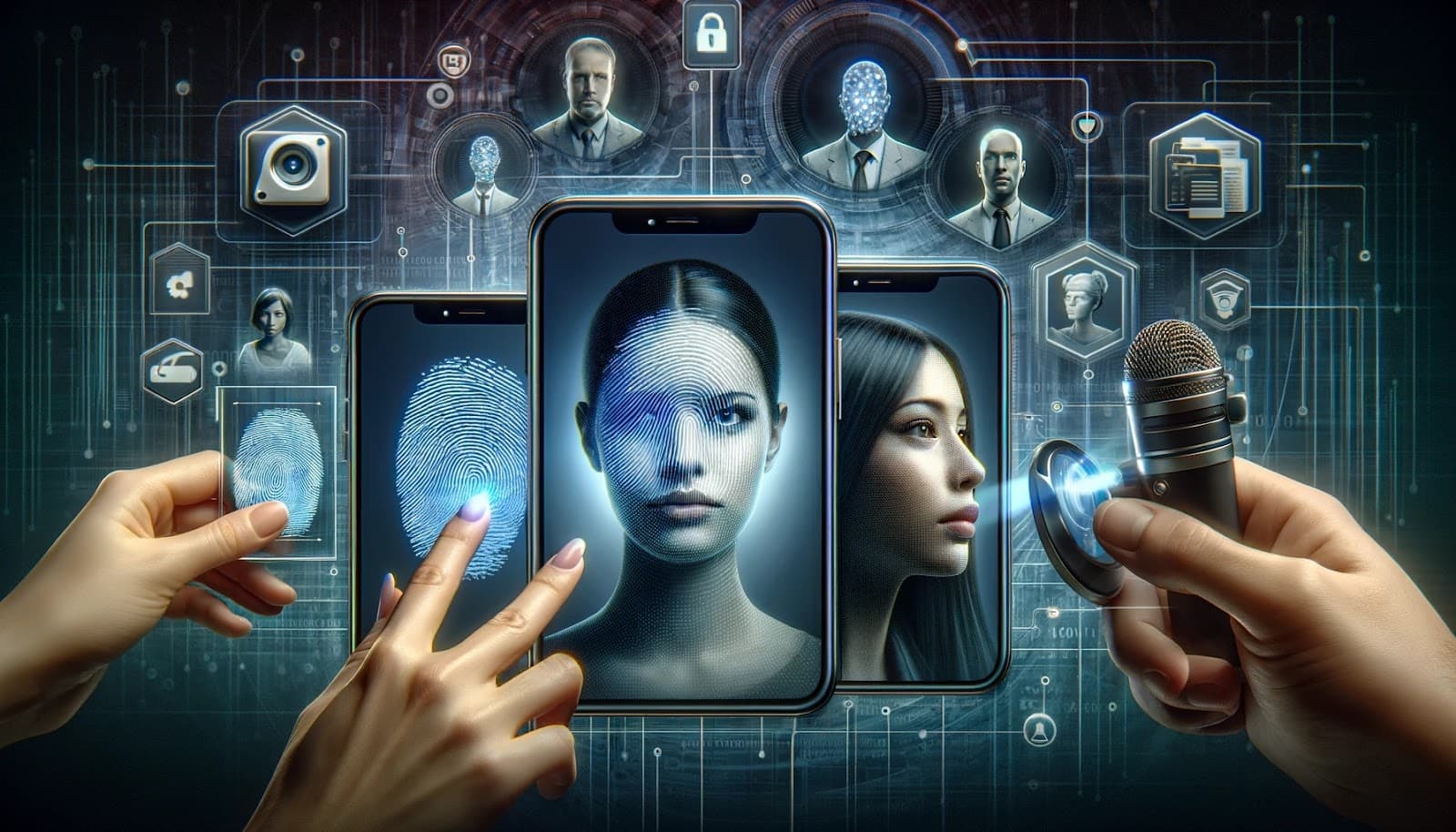Biometric authentication has become a pivotal feature in enhancing security and user experience in mobile applications. This technology leverages unique biological characteristics, such as fingerprints, facial recognition, and voice patterns, to provide robust security measures that are difficult to breach compared to traditional passwords or PINs. In the realm of financial applications, where security is paramount, integrating biometric authentication can significantly reduce the risk of unauthorized access and fraud. Users can now enjoy a seamless and secure login experience, minimizing the hassle of remembering complex passwords while ensuring their personal and financial data remain protected.
For instance, when users download Exness app, they encounter a state-of-the-art biometric authentication system designed to safeguard their transactions and personal information. This feature not only streamlines the login process but also adds an additional layer of security, making it exceedingly challenging for intruders to gain unauthorized access. By embracing biometric technology, the Exness app exemplifies how mobile applications can leverage advanced security measures to provide users with peace of mind and a user-friendly experience, setting a new standard for security in mobile financial applications.
Definition of Biometric Authentication
Biometric authentication is a security process that relies on the unique biological characteristics of an individual to verify their identity. This method of authentication uses an individual’s physical or behavioral traits, which are inherently unique to each person, making it a highly secure and reliable form of identifying and authenticating users.
Key points include:
- Unique Biological Characteristics: Biometric authentication systems capture and compare unique biological traits such as fingerprints, facial features, iris patterns, voice recognition, and even hand geometry.
- Security: By using biometric data, which is significantly more difficult to fake or steal compared to traditional passwords or PINs, biometric authentication provides a higher level of security.
- Convenience: Users don’t need to remember passwords or carry tokens. They simply use their biometric traits to gain access, making the process much more convenient and faster.
- Wide Applications: Biometric authentication is used across various sectors, including mobile banking, smartphone security, airport security, and even in voting systems, reflecting its reliability and efficiency in confirming user identity.
- Privacy and Storage: Proper measures must be taken to securely store biometric data, protecting it from unauthorized access and ensuring privacy is maintained.
In essence, biometric authentication is a cornerstone of modern security systems, offering a blend of heightened security, user convenience, and advanced technology to verify individual identities.
Importance of Biometric Authentication in Mobile Applications
The importance of biometric authentication in mobile applications is profound, given the ubiquitous use of smartphones and the critical need to secure sensitive information and transactions. Here are several key points that underscore its significance:
- Enhanced Security: Biometric data, such as fingerprints or facial recognition, is inherently unique to each individual, making it extremely difficult to replicate or steal. This level of security is crucial for mobile applications, especially those handling personal data, financial transactions, or sensitive corporate information.
- User Convenience: Biometric authentication streamlines the user experience by eliminating the need for complex passwords or multiple authentication steps. Users can quickly gain access to their applications with a simple touch or glance, enhancing usability and user satisfaction.
- Fraud Reduction: By tying access to a user’s biometric data, mobile applications significantly reduce the risk of unauthorized access, thereby minimizing potential fraud and identity theft.
- Compliance and Trust: Many industries are subject to regulatory requirements that mandate stringent data protection measures. Biometric authentication helps meet these requirements, building trust among users and stakeholders by demonstrating a commitment to data security.
- Wide Adoption and Acceptance: As biometric sensors become more common in mobile devices, users are increasingly familiar and comfortable with using biometrics for authentication. This widespread acceptance fosters a more secure and user-friendly environment for app developers and users alike.
- Rapid Verification: In today’s fast-paced world, speed is crucial. Biometric authentication allows for rapid verification, reducing wait times and improving efficiency in accessing services or information.
- Non-transferable: Unlike passwords or PINs, which can be shared or stolen, biometric traits are inherently non-transferable, binding access to the individual.
Biometric authentication plays a pivotal role in securing mobile applications, offering a blend of enhanced security, user convenience, and compliance with regulatory standards, all of which are critical in the digital age where mobile devices are central to our daily lives.
Types of Biometric Authentication
Biometric authentication technologies utilize unique physiological or behavioral characteristics to identify individuals. Here are some prominent types:
- Fingerprint Recognition: One of the most common and widely used biometric methods, it analyzes the patterns of ridges and valleys on the surface of a finger. Each individual’s fingerprints are unique, making this a reliable way to verify identity.
- Facial Recognition: This method uses facial features to identify an individual. Advanced algorithms analyze various facial landmarks and expressions, even adapting to changes over time or in different lighting conditions.
- Iris Recognition: Recognized for its high level of security, iris recognition involves analyzing the unique patterns in the colored ring of the eye surrounding the pupil. It is extremely difficult to replicate or forge due to the complexity and uniqueness of iris patterns.
- Voice Recognition: This biometric method analyzes voice patterns, including pitch, tone, and rhythm, to verify an individual’s identity. It can be used in both physical access scenarios and through digital devices like smartphones.
- Hand Geometry: Although less common than fingerprint recognition, hand geometry authentication measures and analyzes the shape and size of an individual’s hand, including finger length and width.
- Vein Recognition: This method uses the vein pattern in an individual’s palm, finger, or retina for identification. Vein patterns are complex and unique to each individual, providing a secure mode of authentication.
- Signature Dynamics: This technique analyzes the way a person signs their name, considering speed, pressure, and motion. It’s more about the process of signing than the final appearance of the signature.
- Keystroke Dynamics: A behavioral biometric that identifies individuals based on their typing rhythm and patterns on a keyboard. It’s unique due to the subtle differences in typing speed, key pressure, and timing.
- Gait Analysis: Less common but emerging, this method involves analyzing the way a person walks. Gait is difficult to mimic or alter, providing a unique behavioral biometric.
These biometric authentication methods offer various levels of security and convenience and are chosen based on the specific requirements of the application or system they are protecting.

Advantages of Biometric Authentication
Biometric authentication stands out as a cutting-edge solution in the realm of digital security, offering unparalleled advantages over traditional authentication methods. Its ability to utilize unique human characteristics such as fingerprints, facial features, and iris patterns for identity verification brings a new level of security that is much needed in today’s digital age. This form of authentication significantly reduces the risk of unauthorized access, as biometric traits are incredibly difficult to duplicate or forge. The inherent uniqueness of these biological attributes ensures that the security provided is inherently robust, making biometric authentication a cornerstone in safeguarding sensitive information and assets.
The convenience factor associated with biometric authentication is a significant benefit, particularly in enhancing user experience. Traditional methods like passwords and PINs can be cumbersome and prone to being forgotten or compromised. In contrast, biometrics offer a quick and user-friendly way to authenticate identity, with a simple scan or touch typically sufficing to gain access. This ease of use not only streamlines the authentication process but also encourages wider adoption and acceptance among users, who increasingly prefer quicker and more straightforward access to their devices and services.
From an organizational perspective, the efficiency and cost-effectiveness of biometric authentication are profound. Implementing biometric systems can lead to long-term cost savings by reducing the need for password resets, decreasing the risk of security breaches, and lowering the reliance on physical security measures. Additionally, the speed of biometric verification processes enhances operational efficiency, allowing for faster user access and reducing bottlenecks in high-traffic scenarios, such as airports or busy corporate environments.
Moreover, the integration of biometric authentication across various platforms and systems highlights its versatility and adaptability. As technology evolves, biometric systems can be updated and refined to enhance accuracy and reliability further. The capability to create detailed audit trails also enhances security protocols, providing clear accountability and aiding compliance with regulatory standards. As the digital landscape continues to evolve, biometric authentication stands as a key player in the future of security, promising a more secure, efficient, and user-centric approach to identity verification and access control.
Implementation of Biometric Authentication in Mobile Applications
Implementing biometric authentication in mobile applications enhances security and user experience by utilizing unique physiological or behavioral user characteristics. This process begins with integrating the app with the device’s native biometric authentication framework, such as Apple’s Face ID or Android’s Biometric API, ensuring that the application leverages the built-in, secure processing of biometric data. Users are prompted to enroll their biometric information, like fingerprints or facial data, which is stored securely in the device’s hardware, not within the app itself. The application then interacts with this stored data through high-level APIs, maintaining user privacy and security by never accessing the raw biometric data directly.
The application’s authentication process involves invoking the device’s biometric sensor through the API when user verification is needed. If the biometric data matches the pre-enrolled information, the API confirms the user’s identity, allowing them to access the app or specific features within it. It is crucial to have fallback mechanisms, such as PINs or passwords, to ensure users can still access their accounts if the biometric authentication fails. This dual approach caters to various scenarios, enhancing accessibility while maintaining high security standards.
Beyond the technical implementation, developers must prioritize user privacy and comply with data protection regulations, ensuring users are informed about how their biometric data is used and protected. Continuous monitoring and updates are essential to address emerging security threats and adapt to new hardware capabilities. By focusing on both the technological and ethical aspects of biometric authentication, developers can create mobile applications that offer robust security measures, streamlined access, and a trustworthy user experience, aligning with modern digital security expectations.
Conclusion
In conclusion, the integration of biometric authentication into mobile applications represents a significant advancement in digital security and user experience. By leveraging unique biological characteristics, biometric authentication offers a more secure, convenient, and efficient alternative to traditional password-based systems. Its implementation requires careful attention to detail, adherence to best practices in security, and a commitment to user privacy.
As we move forward, the adoption of biometric authentication is set to grow, driven by its benefits in enhancing security and user convenience. Developers and organizations must stay abreast of evolving technologies, regulatory requirements, and best practices to ensure their applications provide not only advanced security but also respect user privacy and trust. In doing so, biometric authentication will continue to play a pivotal role in securing mobile applications and fostering a safer, more user-friendly digital landscape.



